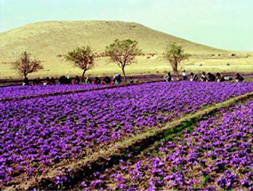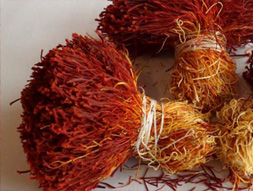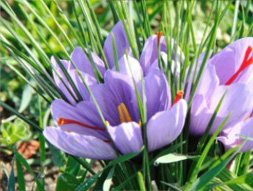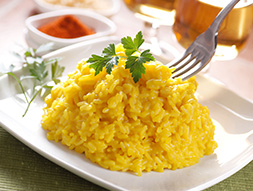The saffran flower has been introduced in Italy at the end of 1.300 from a Dominican friarcalled Domenico Santucci.
Cleopatra, the worldfamous queen of Egypt, used saffran for her warm baths and to give her skin a golden glimpse.
Hermes, the lovers’ protector, used saffran as aphrodisiac spice.
According to the Greek mythology, the creation of saffran was a consequence of the love of a handsome guy for the nymph Smilace, the favourite of Hermes. The God, moved by jealousy, took his revenge turning the young brave into a saffron flower, which was named Krokos in Greek.
Alessandro Magno was used to mix saffron with rice and wine and he was also reported to keep the spice always on his table during his long war campaigns.
The ancient Romans used saffron to prepare aromatic wines, to cook peacock’s exquisite meats, and to create golden erbs savoured sauces with nuts and honey and to cook several dishes.
Precious as crimson, saffron was also used to paint Assyrian and Irish Kings‘ clothes, as well as to colour the bandages used to wrap up Egyptian mummies
Saffron was part of the laudanum formula, a well known drug used in the 19th century







